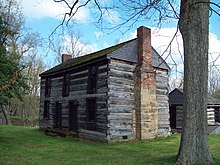Charleston, West Virginia
The origin of the word Kanawha (pronounced "Ka-NAH-wah"), Ka(h)nawha, derives from the region's Iroquoian dialects meaning "water way" or "Canoe Way", implying the metaphor "transport way".In 1791, Daniel Boone, who was commissioned a lieutenant colonel of the Kanawha County militia, was elected to serve in the Virginia House of Delegates.Brine was heated over open flames, causing the water to evaporate and leaving a residue of salt crystals.It was drilled at the site that is now the junction of Brooks Street and Kanawha Boulevard (near the present-day state capitol complex).The Kanawha salt industry declined in importance after 1861, until the onset of World War I brought a demand for chemical products.In addition to the dispute over slavery, the North wanted to separate West Virginia from the rest of the state for economic reasons.The heavy industries in the North, particularly the steel business of the upper Ohio River region, depended on coal from western Virginia mines.Federal units from Ohio marched into western Virginia early in the war solely to capture the mines and control transportation in the area.New industries such as chemical, glass, timber and steel migrated to the state, attracted by the area's natural resources.Architect Cass Gilbert designed the buff-colored Indiana limestone structure in the Italian Renaissance style, with a final cost of just under $10 million.After the three stages of construction were completed, Governor William G. Conley dedicated the West Virginia State Capitol on June 20, 1932.Built in 1947, the construction encompassed clearing 360 acres (1.5 km2) on three mountaintops and moving more than nine million cubic yards of earth.The Robert C. Byrd Federal Building, Haddad Riverfront Park, and Capitol Market are just a few of the new developments that have helped growth in the downtown area during the 1990s.In 2005 FestivALL Charleston was established and has grown into a ten-day festival offering a variety of performances, events and exhibits in music, dance, theatre, visual arts and other entertainments.The Alliance works with local public officials and the private sector to build the economy of the region and revitalize its downtown.[33] Especially in winter, Charleston's average temperatures are warmer than the rest of the state, due to the city being west of the higher elevations.[34] Snowfall generally occurs from late November to early April, with the heaviest period being January and February.Notable companies founded in Charleston include Shoney's restaurants and Heck's / L.A. Joe discount department stores.Charleston is home to numerous annual events and fairs that take place from the banks of the Kanawha River to the capitol grounds.Thousands of visitors each year enjoy traditional music, art, dance, stories, crafts, and food that stems from West Virginia's mountain culture.Since 2005, FestivALL[48] has provided the Charleston area with cultural and artistic events beginning on June 20 (West Virginia Day) and including dance, theater, and music.Highlights include an art fair on Capitol Street and local bands playing live music at stages set up throughout downtown, as well as a wine and jazz festival on the campus of the University of Charleston featuring local and nationally known jazz artists and showcasing the products of West Virginia vineyards.[49] A segment of the East End consisting of several blocks of Virginia and Quarrier Streets, encompassing an area of nearly a full square mile, has been officially designated as a historical neighborhood.[citation needed] In 1983, the Charleston Town Center became the largest downtown mall east of the Mississippi River.The closure of Macy's in 2019 made J.C. Penney the sole remaining commercial anchor pad in the mall after Sears closed in 2017.The West Virginia United is a soccer team that plays its home games at Schoenbaum Stadium in Charleston.The team plays in the USL League Two (USL2) — the fourth tier of the American Soccer Pyramid — in the South Atlantic Division of the Eastern Conference Charleston functions has a mayor-council form of city government.The region is also home to the Charleston Branch of the Robert C. Byrd Institute for Advanced Flexible Manufacturing, an independent program administered by Marshall University providing access to computer numerical control (CNC) equipment for businesses.It was originally established to train students in secretarial and business skills and has undergone changes in location and curriculum over the years.Until the 1960s, several daily Chesapeake and Ohio Railway trains traversed central West Virginia, making stops in Charleston.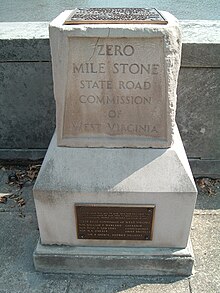





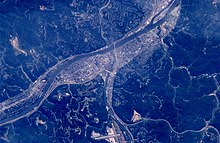


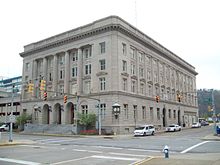



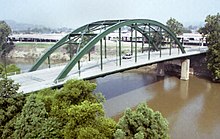

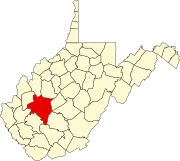
Charles Town, West VirginiaCapital CityWest Virginia State CapitolClay CenterWest Virginia State MuseumKanawha County CourthouseWest VirginiaCountyKanawhaIncorporatedAmy Shuler GoodwinCity CouncilCity ManagerTime zoneUTC−5Eastern (EST)UTC−4ZIP CodesArea code(s)304 and 681FIPS codeHighwaysUS-119SR-214Sales taxcapitalmost populous cityU.S. stateKanawha Countyconfluence2020 censusCharleston metropolitan areaLord Dunmore's WarAmerican RevolutionWilliam MorrisLeonard MorrisDaniel Boonenatural gasCharleston Dirty BirdsAtlantic League of Professional BaseballCharleston Distance RunYeager AirportUniversity of CharlestonWest Virginia State UniversityWest Virginia UniversityMarshall UniversityAmerican Revolutionary WarVirginiaThomas BullittElk RiverCuthbert BullittVirginia General AssemblyIroquoianregisterKanawha RiverVirginia House of DelegatesRichmondWilliam Morris JrGilliland Log Cabinsalt wellMaldenHolly Grove MansionCharles TownCharles WashingtonlyceumWorld War Ichlorinesodium hydroxideCivil WarVirginia Secession Convention of 1861ConfederacyBattle of CharlestonConfederatesOhio RiverWheeling ConventionRestored Government of VirginiaAlexandriaWheelingClarksburgMartinsburgCapitol City Commercial CollegeBasilica of the Co-Cathedral of the Sacred HeartrailroadtimberLibbey-Owens-FordCharleston High SchoolOwens Bottle CompanyCharleston City Hallpresent capitolCass GilbertIndiana limestoneItalian RenaissanceWilliam G. ConleyMorris Harvey CollegeBarboursville, West VirginiaCharleston Municipal AuditoriumWorld War IIstyrene-butadieneInstitutereplacementrubberChuck YeagerCharleston Civic CenterInterstate Highway SystemBill ClintonCharleston Town CenterMississippi RiverMountain StageNational Public RadioVoice of AmericaClay Center for the Arts & SciencesplanetariumWest Virginia Music Hall of FameInternational Space StationecoregionWestern Allegheny PlateauUnited States Census BureauChillicothe, OhioRichmond, VirginiaPittsburgh, PennsylvaniaLouisville, KentuckyCharlotte, North CarolinaEast End Historic DistrictEast EndEdgewoodKanawha City
